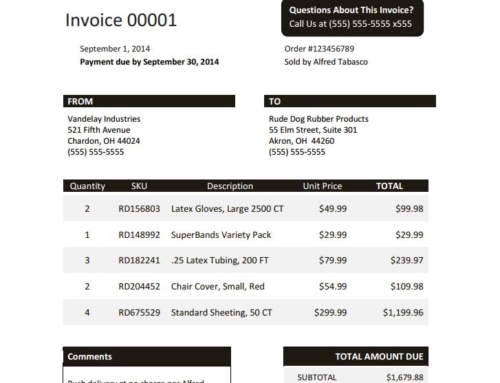How much are your outstanding invoices currently costing you? Many businesses factor in the cost of credit on a high level, but the true cost of accounts receivable is rarely calculated or focused on as a way to increase cash flow. When you sit down and fully calculate your accounts receivable expenses, the number can be surprisingly large. In order to reduce accounts receivable expenses and start using that money elsewhere, you must first identify where those costs are coming from.
The three primary accounts receivable expenses are:
- Carrying costs
- Bad debt expense
- Administration expenses
ACCOUNTS RECEIVABLE CARRYING COSTS
A/R carrying costs= Principal amount X interest rate / 365 X # of days outstanding
Example: The carrying cost of a $1,000 invoice that is paid 100 days late at a rate of 6%* would be calculated as follows: $1000 x .06 / 365 x 100 = $16.44
It is important to note that not all companies will use the same interest rate in their calculation. Interest rates can be based on an internal calculation, the average cost of borrowing money, the interest rate on the money they have on deposit if they do not borrow money, etc.
ACCOUNTS RECEIVABLE BAD DEBT
Accounts receivable are not always collected in full for many reasons; perhaps your customer went out of business or maybe they are unhappy with the service or product; whatever the case might be, bad debt expenses are directly related to how long the invoice has gone unpaid. The longer an invoice goes unpaid, the less likely it is to be paid in full.
Let’s put this into perspective:
-
- On an invoice 3 months old, you are likely to collect 74% of money owed
- On an invoice 6 months old, you are likely to collect 30% of the money owed
- On an invoice 12 months old, you are likely to collect only 10% of the money owed
Most companies write off roughly 4% each year. For a 10 million dollar company, 4% means they are writing off $400,000 every year! By reducing their write-offs by only 10% they would save $40,000 each year. Now consider what reducing bad debt by 10% would do for your company.
ADMINISTRATIVE EXPENSES
As invoices continue to age they become more cost intensive. The staff must send follow-up letters, make phone calls, do additional record keeping, perhaps work longer hours, you may hire an additional employee to keep up etc. if the invoice continues to go unpaid, you may then decide to send it over to a collection agency which will create even more administrative costs. Out of all of the different expenses associated with A/R this is the one that is the easiest to reduce. The only question is how.
HOW TO REDUCE ACCOUNTS RECEIVABLE EXPENSES
Most companies rely on spreadsheets, aging reports, and their ERP/accounting system to help them manage accounts receivable. These practices are extremely inefficient and play a large part in racking up accounts receivable expenses. By slightly adjusting your processes and changing the way you manage accounts receivable, your collectors can become significantly more efficient and more effective in their efforts. Not only will this help cut back on admin costs, it will also help you to reduce bad debt and carrying costs.
By following accounts receivable management best practices and by utilizing software to automate invoice delivery, reminder emails, call scheduling, and other repetitive tasks, your collectors can keep up with their daily clerical activities while using their time to focus on more pressing, revenue driving activities such as settling invoice disputes or calling customers.




